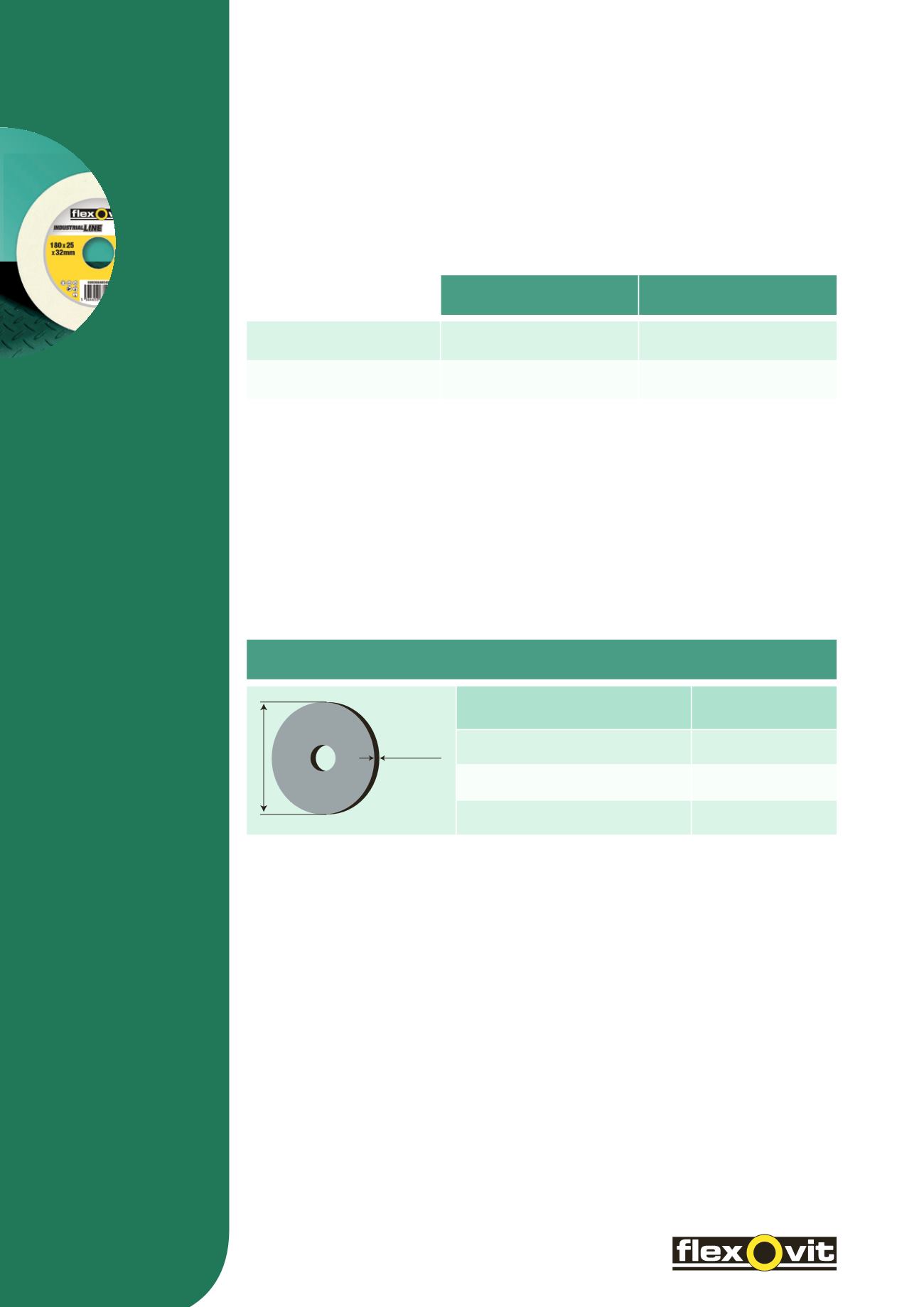

BONDED
ABRASIVES
232
For best results, always use a coolant when dressing.
Coolant
Dressing with diamonds should always be carried out using a copious supply of coolant. The coolant should
always be turned on fully before the diamond touches the wheel. The diamond life will deteriorate rapidly
if it is allowed to become hot and then cooled rapidly as can be experienced with an intermittent coolant flow.
Rotation of the Dressing Tool
To ensure maximum diamond life, single point and conical cluster diamond dressing tools should be
systematically rotated after every four or five dressings to ensure that the keen edge generated from the drag
angle is constantly presented to the wheel.
MULTIPLY THE DIAMETER OF THE WHEEL BY ITS THICKNESS
Diameter x Thickness
(mm)
Carat
<3000
0,25 Carat
3000-12000
0,50 Carat
>12000
1 Carat
Diamond Size
The size of diamond is important when selecting a dressing tool and several factors are relevant in this selection,
e.g. large, coarse grit wheels require a larger diamond than smaller, fine grit wheels. If a fine finish is required,
the use of a diamond which is too large can adversely affect the finish and cancel the effect of fine grit selection.
The trend today is away from single point dressers and towards multi-point dressers employing a matrix shape
to suit the form required.
A useful formula for determining single point diamond size is:
Wheel diameter (mm) x Wheel thickness (mm)
ROUGHING
FINISHING
Diamond Infeed mm
per pass
0,025mm
0,012-0,020mm
Diamond Traverse rate mm
/wheel rev.
0,18mm
0,10mm
The diamond should always be applied at the centreline of the wheel with a 5
º
-15
º
drag angle.
SINGLE & MULTI-POINT DIAMONDS
Diamonds are the first choice where close tolerances, fine finishes, speed and flexibility are required.
Since diamond dressing is primarily a machining operation rather than a crushing operation, the surface formed
on the wheel is closer than that obtained from mechanical dressers. This results in a slower cutting wheel
with better form holding characteristics and superior finish control.
By varying the depth of cut per pass made by the diamond and changing the traverse rate, different wheel
surfaces, and hence different cutting actions, can be achieved.
The following are general recommendations for dressing with single point diamonds.
Diameter
Thickness
TECHNICAL INFORMATION


















